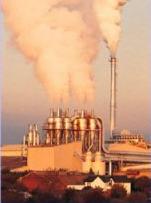
A new report (.pdf file) from The United Nations Environment Programme (UNEP), along with the World Meteorologist Association, and a group of scientists will be presented to the governing council of UNEP. The report states that reducing emissions of short lived particles from black carbon, methane and ground level ozone could reduce warming to a half degree within the first half of this century. However the efforts would have to be taken worldwide by all nations to reach the given numbers.
These emissions, known as soot, are particles of fossil fuels that are released into the atmosphere upon burning. Along with damage done to the atmosphere, they also take a toll on human health and damage crops. The report stresses the damaging effects these emissions have on the environment on a global scale. Among the points are;
- The presence of black carbon in the lower atmosphere has disrupted weather patterns, like the Asian monsoon, for example, that have effected the livelihoods of millions of people.
- The black characteristics of these particles has caused darkening of snow and ice decreasing their reflection of sunlight (increasing absorption), thus heating the atmosphere causing snow and glacier regions around the world to experience severe melting.
- Ozone in the lower atmosphere damages human health, and has been a cause of premature death globally. This same particle causes damages crops, reducing yield.
The report says that even a “small number of emission reduction measures” for these particles would immediately begin to “protect climate, public health, water and food security, and ecosystems”.
While this report has netted little coverage (it is just another United Nations recommendation after all), some are hopeful that the United States government will make changes after recently cutting back the Environmental Protection Agency’s budget. Among the cuts to the budget was a program to update dirty diesel engines, a large contributor of black carbon.
While a worldwide cut of these short lived emissions seems a daunting task, UNEP stresses that it can be done with existing technologies, “but would require significant strategic investment and institutional arrangements.”
